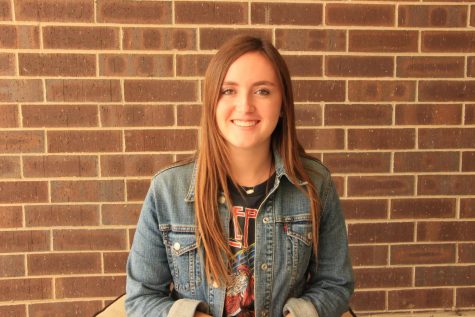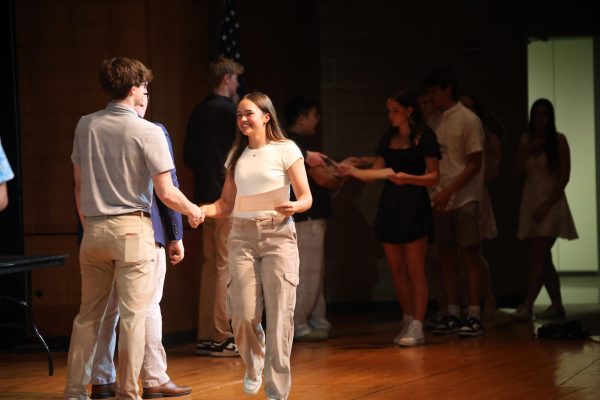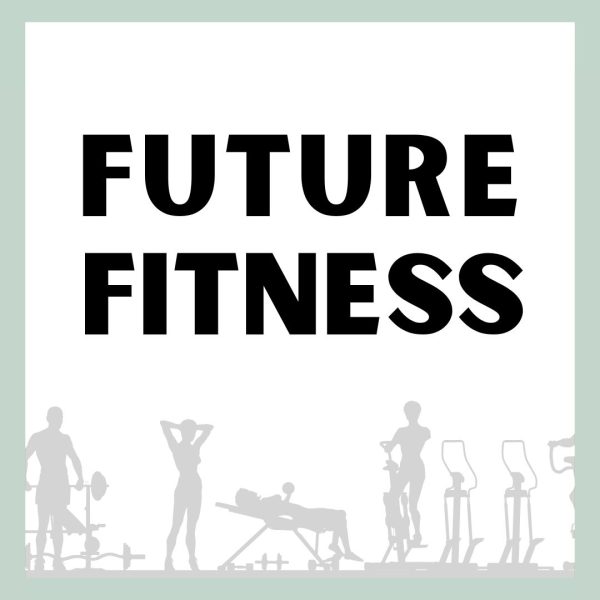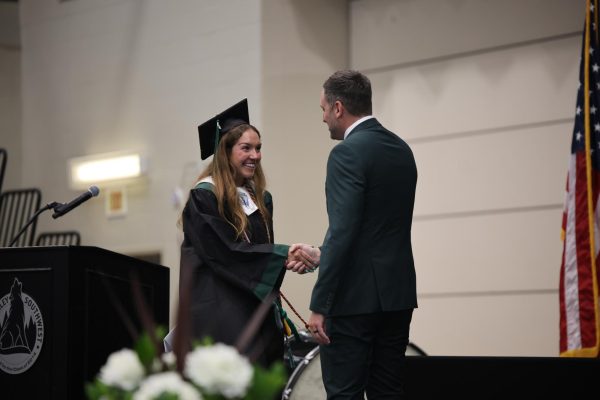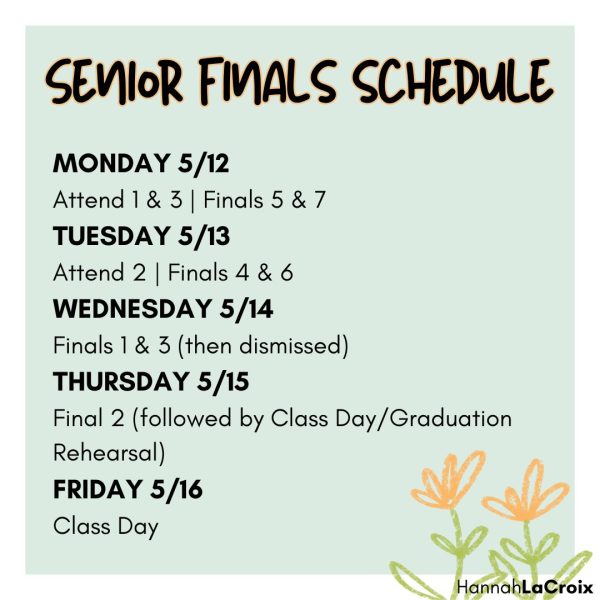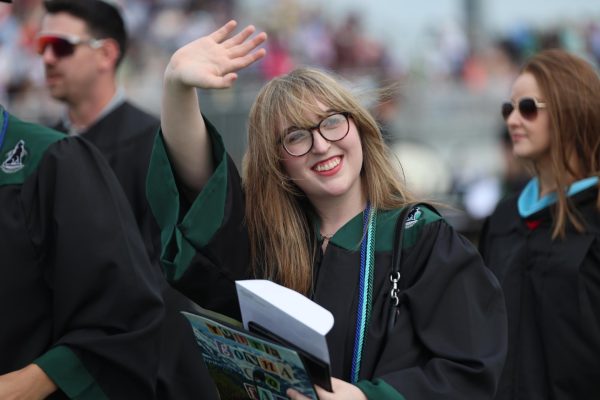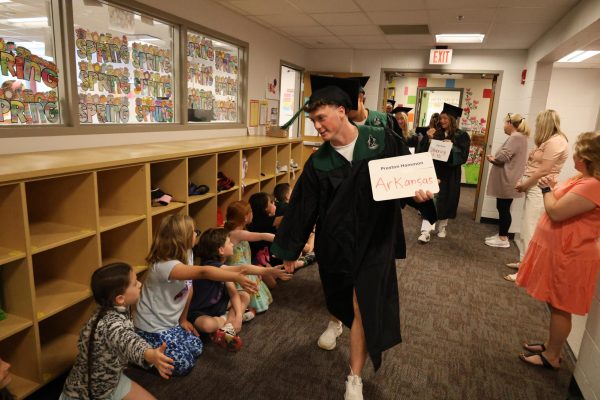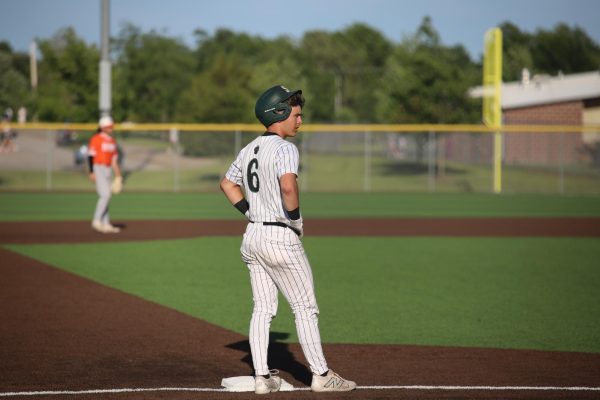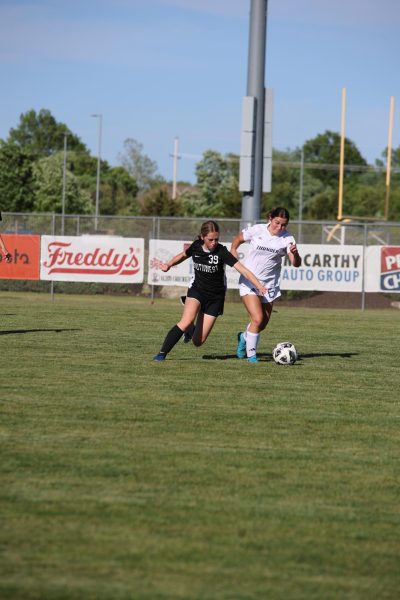Anatomy students write books for pediatric cancer patients
In room 304 students write books about an apple, a deflated basketball and a dragon. What do these things all have in common? They all represent cancer.
“Essentially we learned all about how cancer works and the immune system and the cells,” junior Kati Larson said. “Then we had to write a book explaining that process in a way kids could understand it, and motivate them to continue to fight against cancer.”
Trying to incorporate more than just learning into a curriculum, science teacher Chris Jenson’s anatomy classes spearheaded a new project.
“This project came about, actually, from the creative idea of one of our Hoops for Hope survivors,” Jenson said. “This little young man encouraged that we do something in addition to fundraising to keep cancer patients interested, upbeat and engaged in life.”
In order to encourage service among his students in the form of a restructured learning experience, Jenson said he was inspired by his previous connection with a Hoops for Hope survivor and used his advice as a platform for the book project.
“It dawned on me, at least for myself, I’ve never given students an opportunity to [give back] as part of their class work,” Jenson said.
Senior Ben Hawkins said he enjoyed this new way of learning and was happy with the outcome and difference his work would entail.
“I did enjoy working on this project because I knew it would make an impact on how the kids were, and how the kids lives went day to day,” Hawkins said. “Having visited a lot of, not only cancer patients, but patients in general, I know how bored they get and how they can be depressed by what they’re told, so little gifts like that can go a long way for them.”
The assignment was to write a book addressing cancer, which gave students the creative freedom to pick how they wanted to do so. Students such as sophomore Ben Pardo said he prefered this experience.
“I think it allowed everyone to be creative and do their own thing instead of just taking a boring test,” Pardo said.
Throughout the project process, Pardo said it was eye opening and taught him to be grateful for what he was dealt in life.
“It made me realize that I’m privileged and I’m not sick or anything and I get to go to school every day and be a regular person,” Pardo said.
This unit did not only teach the students content related to cancer and science, the students said it gave them insight on their day-to-day lives. Hawkins said he learned to value the little things.
“I learned that little things in life make a big difference in people’s lives,” Hawkins said. “Even if it’s just an extra smile someone gets in their day, that would help them a lot to pick up their day or maybe even their week — one good thing they can ride with.”
With a mentality to make a difference and end results with ramifications beyond herself and her grade, Larson said she was inspired to do her best.
“There was kind of, not pressure, but motivation for us to do really well and learn everything really well so we could give the kids the best thing that we could,” Larson said. “I think that it was a really good way to motivate us.”
In order to create books that are fully developed, Jenson got the art department involved. The art department will have their students, second semester, illustrate the books. Jenson said the goal is to create the best books possible: cohesive, factually correct and aesthetically pleasing. In order to do so, he said he is hopeful to get more departments involved.
“I think this could involve a lot of parts of the school with a lot of students, and I think it’s cool to use class time and information you learned in class to make a difference for someone,” Jenson said. “I think this is something we can be proud of and I’d like to do it for a long time.”
These books are not just another random project; Jenson said he hopes this project can be a legacy left at Southwest and a building block for so much more in the future.
“Their goal is to use this project year to year and kind of build a library at Children’s of books about childhood cancer written by Southwest students,” Jenson said. “When those kids come in, as they’re going through the initial process and it’s kind of scary and all this stuff is happening, whenever the time is right they can be like, ‘hey, today I know you have a lot going on but maybe you want to read this, some kids that care about you wrote it.’”
After completing the project, the students were aware of the difficulties pediatric cancer patients face day in and day out and worked hard to create books that explained what was going on, but nonetheless encouraged fearlessness in the face of adversity. Hawkins said his group wanted to leave their reader with an informed but vitalized mentality.
“Despite the conditions and how things turn against you, there will always be a way for, not only you, but other people to help bring you up from whatever situation you encounter,” Hawkins said.


